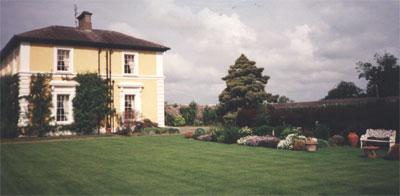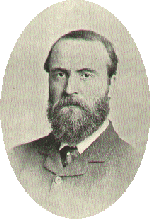 | Home |
 | Gardens |
 | History |
 | What to Do? |
Dowdstown House is situated in lovely countryside 2 miles north of Ardee on the N52.
First mention of "Dowdstown" is recorded in the "FIANTS OF QUEEN ELIZABETH" in 1577, a grant to Laurance Clinton in return for rebuilding and maintaining the bridge at Mapastown

Dowdstown Castle was built on the lands and is recorded on maps as recent as 1778. Dowdstown house was built on or around the site of the original castle in the late 18th century. The house was extended in the 1850's with the addition of an Italianite style house designed by John Neville, Louth County Architect, who also designed nearby Shanlis House and Cardistown House.
Features include shallow hipped roof, bracketed eaves, vermiculated quoins and consoled architraves featuring dog and rams heads, also used at Shanlis house. Internal features include fine Italianite plasterwork, crafted marble fireplaces and pitch pine woodwork and floors. The older house includes sandstone flagstones and quarry tiles and granite fibrecast.
The house has been tastefully restored and upgraded by the present owners and surrounded by 2 acres of gardens, woodlands, and stone built outhouses.
The Callan family who originally built Dowdstown House were very invloved in Irish politics. Nicholas Callan, born 1783, who inherited the house from his father Patrick, was a well off Catholic tenant farmer. He was a supporter of Daniel O'Connell's emancipation movement of the 1820's, and Alexander Dawson, the elected candidate for Louth in 1826. He was a contibutor to the construction of Ardee Church, John Street in 1829 and Dowdstown School in 1834, located 400 yards from Dowdstown House.
His son Philip, a barrister who supported the purchase of the site for Ardee Convent at Hale Street, was elected to Parliament in 1874.Some of his methods were unorthodox. He developed a close relationship with Isaac Butte, the leader of the home rule movement. He did, however, make many enemies, one of whom was Charles Stewart Parnell. Callan is believed to have leaked information to the Irish Times in 1886 about Charles Stewart Parnell's affair with Kitty O'Shea, which precipitated the end of Parnell's career.
